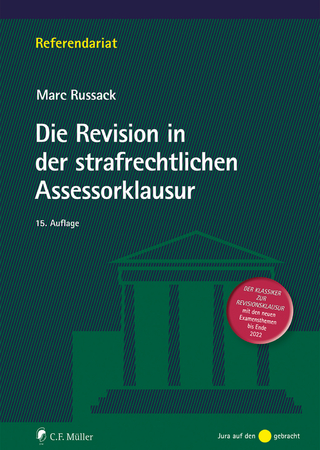
The Oxford Handbook of Environmental Criminology
Oxford University Press Inc (Verlag)
978-0-19-027970-7 (ISBN)
The study of how the environment, local geography, and physical locations influence crime has a long history that stretches across many research traditions. These include the neighborhood effects approach developed in the 1920s, the criminology of place, and a newer approach that attends to the perception of crime in communities. Aided by new technologies and improved data-reporting in recent decades, research in environmental criminology has developed rapidly within each of these approaches. Yet research in the subfield remains fragmented and competing theories are rarely examined together.
The Oxford Handbook of Environmental Criminology takes a unique approach and synthesizes the contributions of existing methods to better integrate the subfield as a whole. Gerben J.N. Bruinsma and Shane D. Johnson have assembled a cast of top scholars to provide an in-depth source for understanding how and why physical setting can influence the emergence of crime, affect the environment, and impact individual or group behavior. The contributors address how changes in the environment, global connectivity, and technology provide more criminal opportunities and new ways of committing old crimes. They also explore how crimes committed in countries with distinct cultural practices like China and West Africa might lead to different spatial patterns of crime. This is a state-of-the-art compendium on environmental criminology that reflects the diverse research and theory developed across the western world.
Gerben J.N. Bruinsma is full-time director of the Netherlands Institute for the Study of Crime and Law Enforcement (NSCR), Amsterdam and professor emeritus of environmental criminology at the Vrije University of Amsterdam, the Netherlands. His current interests are environmental, theoretical and historical criminology. Shane D. Johnson is professor and director of the UCL Dawes Centre for Future Crime at the UCL Jill Dando Institute of Crime Science at University College London. He has particular interests in exploring how methods from other disciplines can inform understanding of crime and security issues, and the extent to which theories developed to explain everyday crimes can explain more extreme events such as riots, maritime piracy and insurgency.
Foreword
Michael Tonry
1 Environmental Criminology: History, Scope and State of the Art
Gerben J.N. Bruinsma and Shane D. Johnson
SECTION I - Reflections on Theoretical Issues
2 Social Spatial Influences
Pamela Wilcox and Kristin Swartz
3 How Do We Get to Causal Clarity on Physical Environment-Crime Dynamics?
Ralph B. Taylor
4 The Individual Perspective
Lucia Summers and Rob T. Guerette
5 Do We Really Need Collective Social Process to Understand Why Crime Occurs and Offenders Commit Crime?
Elizabeth R. Groff
6 The Importance of High Offender Neighborhoods within Environmental Criminology
Anthony Bottoms
7 Four Images of the Delinquent Area
Marcus Felson
8 Evaluating Theories of Environmental Criminology: Strengths and Weaknesses
Francis T. Cullen and Teresa C. Kulig
SECTION II - Methods of Research in Environmental Criminology
9 Deciding on the 'Appropriate' Unit of Analysis: Practical Considerations in Environmental Criminology
Brian Lawton
10 GIS and Spatial Analysis
Martin Andresen
11 The Role of Innovative Data Collection Methods in Advancing Criminological Understanding
Reka Solymosi and Kate Bowers
12 New Steps in Visualization for Research in Environmental Criminology
Patricia L. Brantingham, Paul J. Brantingham, Justin Song, and Valerie Spicer
13 Victimization Surveys in Environmental Criminology
Andromachi Tseloni, Nick Tilley, and Graham Farrell
14 Systematic Observation
Ian Brunton-Smith
15 Computer Simulations. Agent-Based Environmental Criminology
Daniel Birks
SECTION III -Everyday Urban Crime: Empirical Examples and Reviews of Research
Neighborhoods and Communities
16 Research on Neighborhoods in European Cities
Lieven Pauwels, Gerben Bruinsma, Frank Weerman, and Wim Hardyns
17 Testing Theories of Social Disorganization in Nigeria
Faisal Umar, Ahmadu Bello, Shane D. Johnson, and James A. Cheshire
18 Gated Communities and Crime in the United States
Nicholas Branic and Charis E. Kubrin
19 Egohoods: Capturing Change in Spatial Crime Patterns
John R. Hipp and Christopher J. Bates
20 Signal Crimes: How the Harms of Crime and Disorder Travel across Social Space-Time
Martin Innes and Helen Innes
Built Environment
21 Built Environment, Land Use and Crime
Kathryn Wuschke and J. Bryan Kinney
22 Macro Level Generators and Crime (Parks, Stadiums, and Transit Stations)
Andrew Newton
23 Does Crime Impact Real Estate Prices? An Assessment of Accessibility and Location
Vania Ceccato and Mats Wilhelmsson
24 Street Networks and Crime
Toby Davies and Kate Bowers
Places
25 The Criminology of Places
Cody W. Telep and David Weisburd
26 Studying Situational Effects of Setting Characteristics: Examples from the Study of Peers, Activities and Neighbourhoods
Frank Weerman, Evelien Hoeben, Wim Bernasco, Lieven Pauwels, and Gerben J.N. Bruinsma
27 Place Management
John Eck and Tamara D. Madensen
28 Crime Concentrations: Hot Dots, Hot Spots and Hot Flushes
Dainis Ignatans and Ken Pease
Routine Activity Convergence
29 Time and Opportunity
Lisa Tompson and Timothy Coupe
30 Guardianship
Danielle Reynald
31 Mobility and Location Choice of Offenders
Wim Bernasco
Crime Prevention
32 What have we Learned from Environmental Criminology for the Prevention of Crime?
Brandon Welsh and Sema A. Taheri
SECTION IV - Special Crimes and Circumstances
33 Riots, Space and Place
Peter Baudains and Shane D. Johnson
34 Geoprofiling Terrorism
Kim Rossmo
35 Child Sexual Abuse and Opportunity
Richard Wortley
36 (Juvenile) Gangs and Space
Matthew Valasik and George Tita
37 Organized Crime and Places
Edward Kleemans
38 Cybercrime and Place: Applying Environmental Criminology to Crimes in Cyberspace
Fernando Miró Llinares and Shane D. Johnson
39 Maritime Piracy
Michael Townsley
| Erscheinungsdatum | 15.03.2018 |
|---|---|
| Reihe/Serie | Oxford Handbooks |
| Zusatzinfo | 99 illustrations |
| Verlagsort | New York |
| Sprache | englisch |
| Maße | 249 x 175 mm |
| Gewicht | 1724 g |
| Themenwelt | Recht / Steuern ► EU / Internationales Recht |
| Recht / Steuern ► Strafrecht ► Strafverfahrensrecht | |
| ISBN-10 | 0-19-027970-2 / 0190279702 |
| ISBN-13 | 978-0-19-027970-7 / 9780190279707 |
| Zustand | Neuware |
| Haben Sie eine Frage zum Produkt? |
aus dem Bereich


